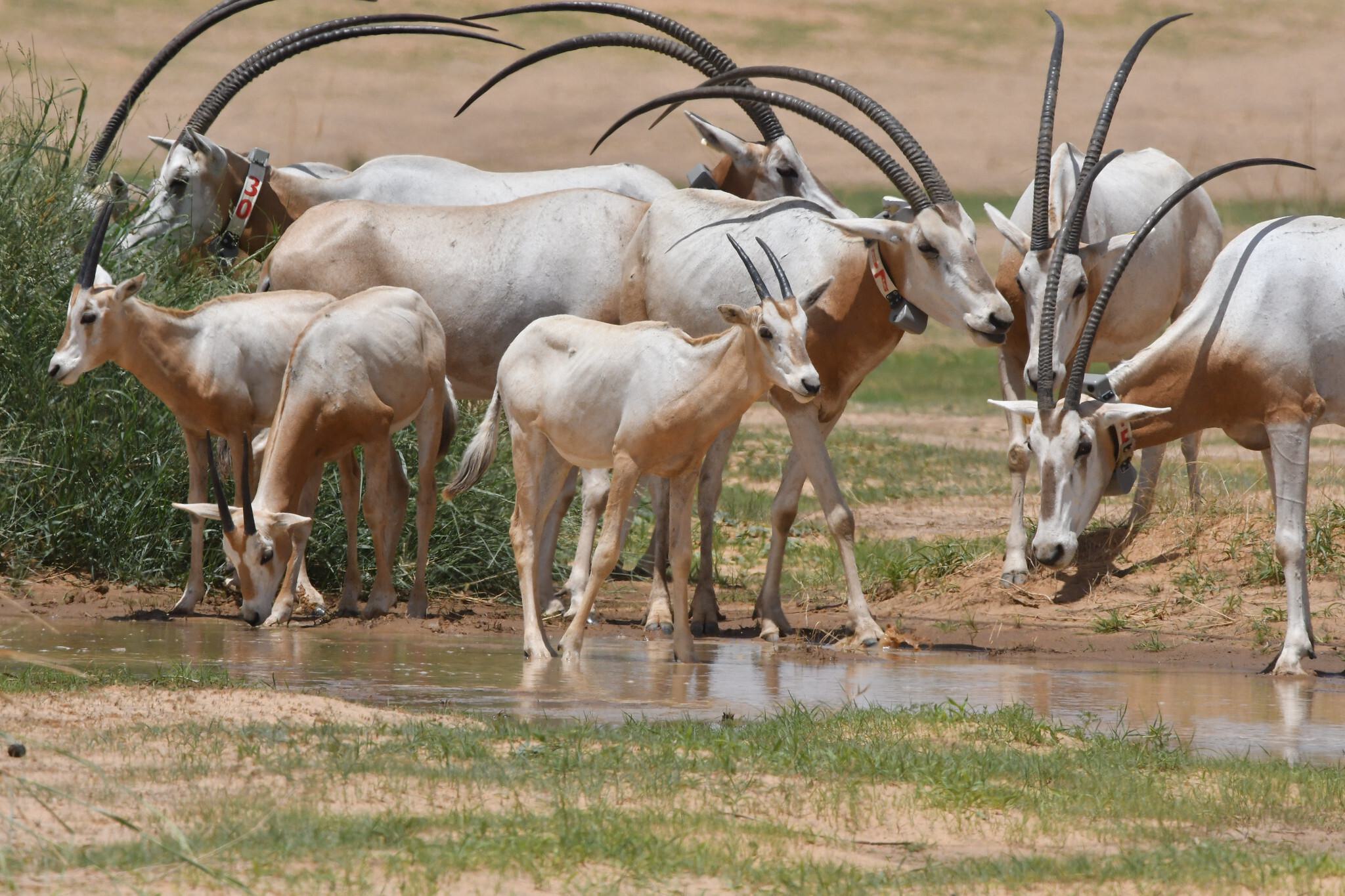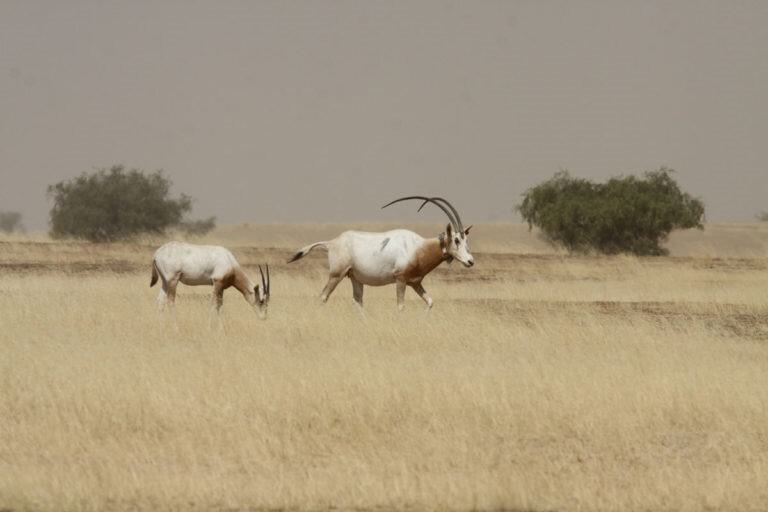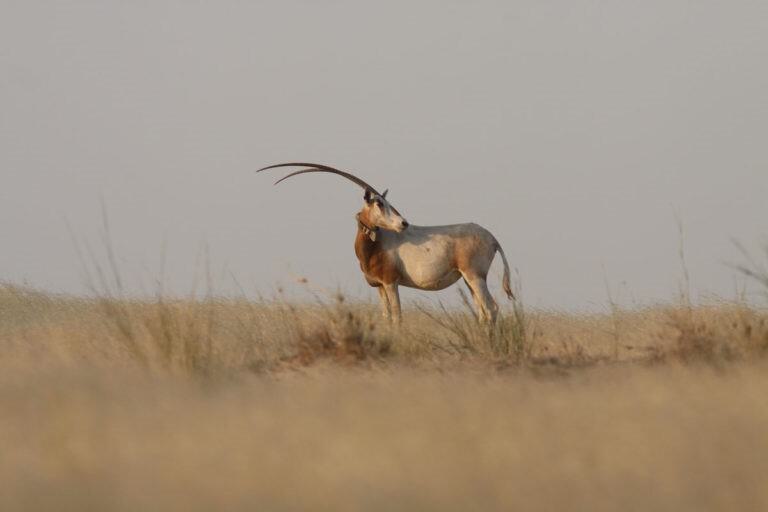Earlier in December, the International Union for the Conservation of Nature (IUCN) Red List reclassified the scimitar-horned oryx from “Extinct in the wild” to “Endangered.”
This accomplishment was due to the collaborative partnerships with organizations around the world, including the Environment Agency-Abu Dhabi (EAD), Fisheries and Sustainable Development representing the Government of Chad, Sahara Conservation, the Smithsonian’s National Zoo and Conservation Biology Institute, the Zoological Society of London, the Saint Louis Zoo, The Royal Zoological Society of Scotland, Fossil Rim Wildlife Center, and more.
The scimitar-horned oryx was recognized as extinct in the wild in 1991. Unfortunately, this was not the only species under threat of extinction in the region, so as early as 1989 zoos worldwide came together to bring awareness around the plight of the endangered species of the Sahara and begin recovery and reintroduction programs utilizing their expertise in breeding and animal care. The Saint Louis Zoo was the incubator and U.S. base of operations during the development of the Sahara Conservation Fund and one of 21 zoos supporting its core operations. In 2007, the Saint Louis Zoo helped organize the repatriation of zoo-born scimitar-horned oryx and addax into fenced reserves in Tunisia.
The reintroduction project in Chad began in 2016 to grow a healthy and self-sustaining population in its natural habitat. During the reintroduction process, telemetry collars were placed on many of the oryx to track the herd's location. There were 285 oryx reintroduced into the wild in Chad, with herd number increasing to more than 600 scimitar-horned oryx, with multiple second-generation births!
Although there is an improvement in the species’ conservation status, some of the threats still exist and sustained efforts are still required to ensure the oryx’s long-term survival in the wild.
The scimitar-horned oryx is a flagship species for an entire community of desert wildlife, plants and habitats. Its restoration and the related protection of its environment have had immensely positive benefits for other species, such as addax, dama gazelles and carnivores. There is still a lot of work to be done!




